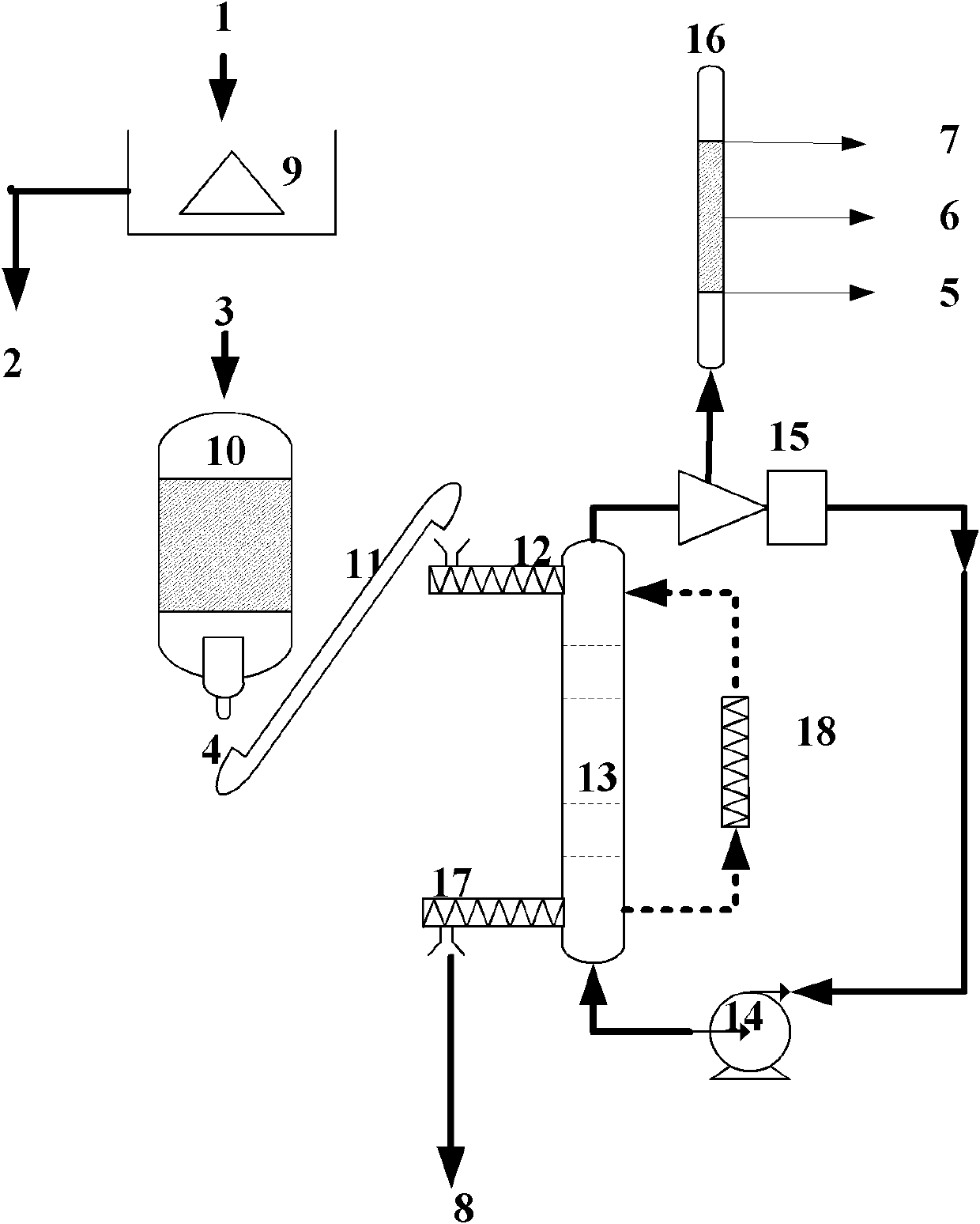Method for producing hydrogen and methane through continuous solid state fermentation of kitchen garbage
A technology for food waste and hydrogen production, which is applied in the field of waste resource utilization, can solve problems such as difficulty in ensuring the speed of fermentation, and achieve the effects of optimizing production environment conditions, eliminating pollution control, and increasing efficiency
- Summary
- Abstract
- Description
- Claims
- Application Information
AI Technical Summary
Problems solved by technology
Method used
Image
Examples
Embodiment 1
[0016] From the food waste collected from a certain university canteen in Beijing, first utilize the high-speed centrifuge 9 to dehydrate the food waste 1 collected, so that the water content of the food waste 1 is reduced to 45% (w / w). Then use a 500L steam explosion tank 10 to perform steam explosion treatment on the dehydrated kitchen waste 3, the steam explosion conditions are: steam pressure 1.20MPa, steam explosion pressure maintenance time is 180 seconds. After the steam explosion treatment, the liquefaction phenomenon of the food waste is obvious, and the starch and cellulose raw materials in the food waste are obviously degraded, which is very beneficial to the subsequent anaerobic fermentation. The food waste 4 after the steam explosion treatment is mixed with the sludge of the urban sewage treatment plant according to the ratio (weight ratio) of 1:0.2 and then sent into the continuous solid-state fermentation reaction tower 13 for anaerobic fermentation. The material...
Embodiment 2
[0018] From the food waste collected from a certain university canteen in Beijing, the food waste 1 collected by high-speed centrifuge 9 is firstly dehydrated to reduce the water content of the food waste 1 to 40% (w / w). Then use a 1000L steam explosion tank 10 to perform steam explosion treatment on the dehydrated kitchen waste 3, the steam explosion conditions are: steam pressure 2MPa, steam explosion pressure maintenance time is 60 seconds. After the steam explosion treatment, the liquefaction phenomenon of the food waste is obvious, and the starch and cellulose raw materials in the food waste are obviously degraded, which is very beneficial to the subsequent anaerobic fermentation. The food waste 4 after the steam explosion treatment is mixed with the sludge of the urban sewage treatment plant according to the ratio (weight ratio) of 1:0.1 and then sent to the continuous solid-state fermentation reaction tower 13 for anaerobic fermentation. The material is fed from the scre...
PUM
 Login to View More
Login to View More Abstract
Description
Claims
Application Information
 Login to View More
Login to View More - R&D
- Intellectual Property
- Life Sciences
- Materials
- Tech Scout
- Unparalleled Data Quality
- Higher Quality Content
- 60% Fewer Hallucinations
Browse by: Latest US Patents, China's latest patents, Technical Efficacy Thesaurus, Application Domain, Technology Topic, Popular Technical Reports.
© 2025 PatSnap. All rights reserved.Legal|Privacy policy|Modern Slavery Act Transparency Statement|Sitemap|About US| Contact US: help@patsnap.com

